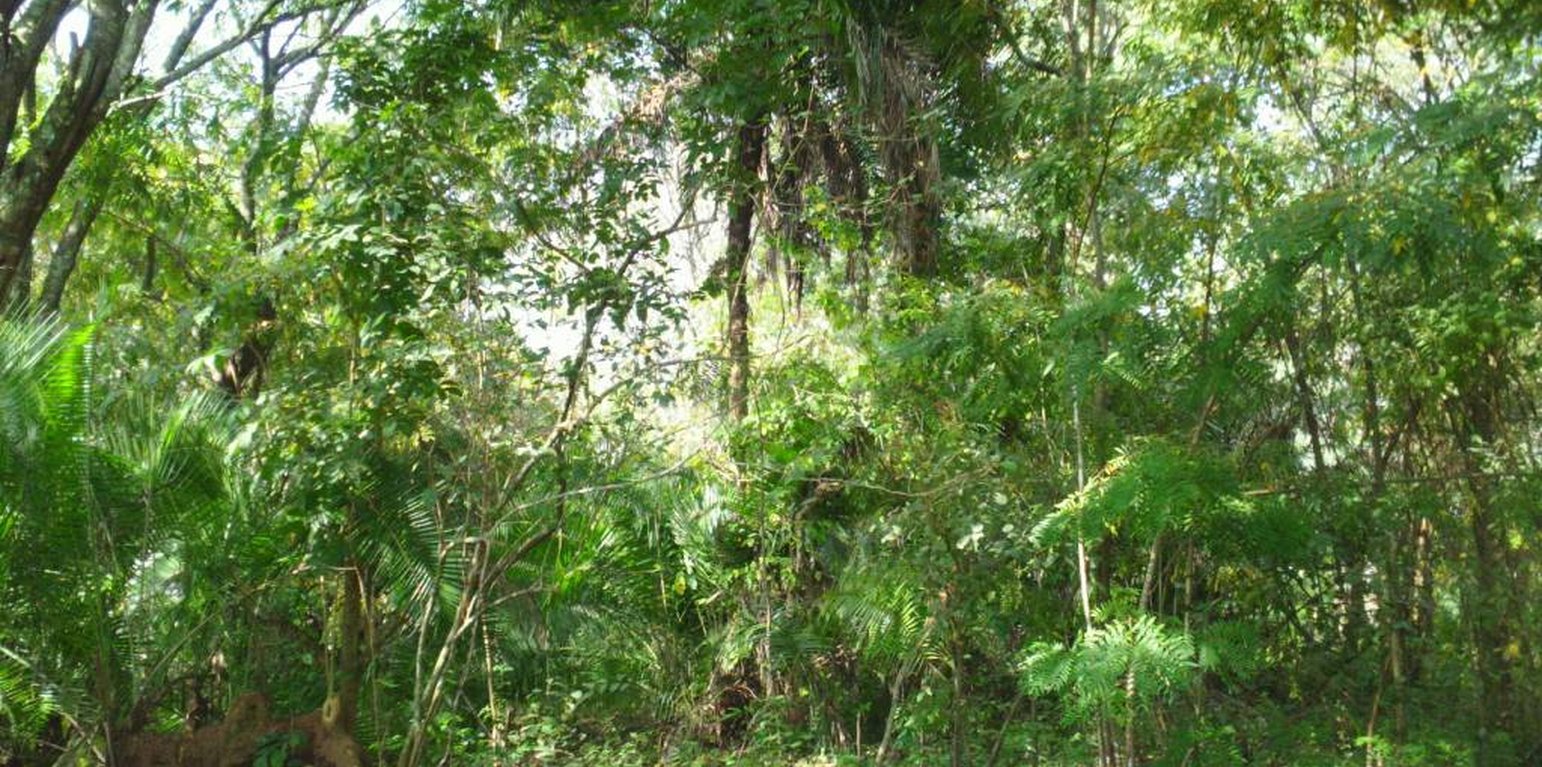



Farmer-Managed Natural Regeneration (FMNR) involves encouraging existing tree stumps or self-sown seeds to re-grow into trees by pruning and protecting them. FMNR adapts centuries-old methods of woodland management, called coppicing and pollarding, to produce continuous tree-growth of trees from stumps or seedlings. It can be used wherever there is living tree stumps with the ability to coppice (re-sprout) or seeds in the soil that can germinate. FMNR is both a community mobilization approach for landscape restoration, and a specific technique to regenerate trees.
FMNR depends on the existence of living tree stumps or roots in crop fields, grazing pastures, woodlands or forests. Each season bushy sprouts will emerge from the stumps/ roots, often appearing like small shrubs. Continuous grazing by livestock, regular burning and/ or regular harvesting for wood fuel results in these sprouts never attaining tree stature. On farmland, standard practice has been for farmers to slash these sprouts in preparation for planting crops, but with a little attention the sprouts can be turned into mature trees without jeopardizing, but in fact, enhancing crop yields (Ndour, et a., 2010; Garity et al., 2010).
For each stump, a decision is made as to how many stems will be chosen to grow. On average, 2-3, are recommended. The tallest and most straight stems are selected and the remaining stems culled. Best results are obtained when the farmer returns regularly to prune any unwanted new stems and side branches as they appear. Farmers can then grow other crops between and around the trees, such as maize, sorghum, sesame, beans and cowpeas. Whenever farmers want wood for any purpose, e.g. building poles, wood fuel, stakes, trellis, etc., they can cut the stem(s) they want and leave the rest to continue growing. The remaining stems will increase in size and value each year, and will continue to protect the environment. Each time a stem is harvested, a younger stem is selected to replace it (Rinauldo, 2012).
FMNR is applicable in dry lands where it is capable of returning degraded croplands and grazing lands to productivity. It is also used to restore degraded forests, thereby reversing biodiversity loss and reducing vulnerability to climate change. Furthermore, the practice has a big role in maintaining not-yet-degraded landscapes in a productive state when combined with other sustainable land management practices such as conservation agriculture on cropland and holistic management on rangelands.
The farmer likes FMNR because of the direct benefits such as wood fuel, building materials, food and fodder without the need for frequent and costly replanting. Also, when FMNR trees are integrated into croplands and grazing pastures there is an increase in soil fertility and organic matter, soil moisture, leaf fodder, and crop yields. There is also a decrease in wind and heat damage, and soil erosion. FMNR is a rapid, relatively low-cost and easily replicable technology for restoring and improving agricultural, forested and pasture lands.
Farmers dislike FMNR because the tree species, which are mainly native, grow slowly compared to other comparable species such as Eucalyptus and Pine. Native trees also grow in random locations in the landscape depending on the location of the previous trees/seeds, making it difficult to plan arrangement of other farm activities.
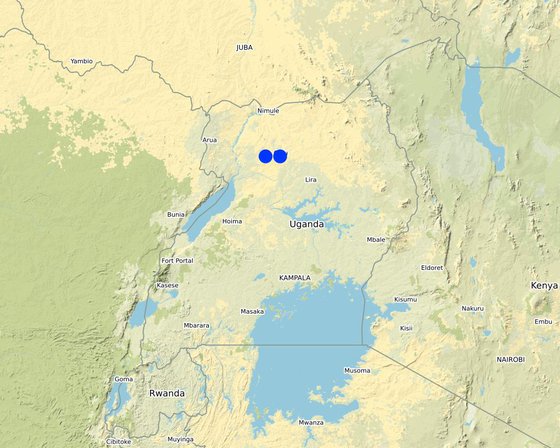
ສະຖານທີ່: Gulu and Nwoya districts, ອູເຈນດາ
ຈໍານວນ ພື້ນທີ່ ທີ່ໃຊ້ ເຕັກໂນໂລຢີ ທີ່ໄດ້ວິເຄາະ: 2-10 ພຶ້ນທີ່
ການແຜ່ກະຈາຍຂອງເຕັກໂນໂລຢີ: ແຜ່ຂະຫຍາຍຢ່າງໄວວາໃນພື້ນທີ່ (approx. < 0.1 ກິໂລແມັດ2 (10 ເຮັກຕາ))
ວັນທີຂອງການປະຕິບັດ: 2014
ປະເພດຂອງການນໍາສະເໜີ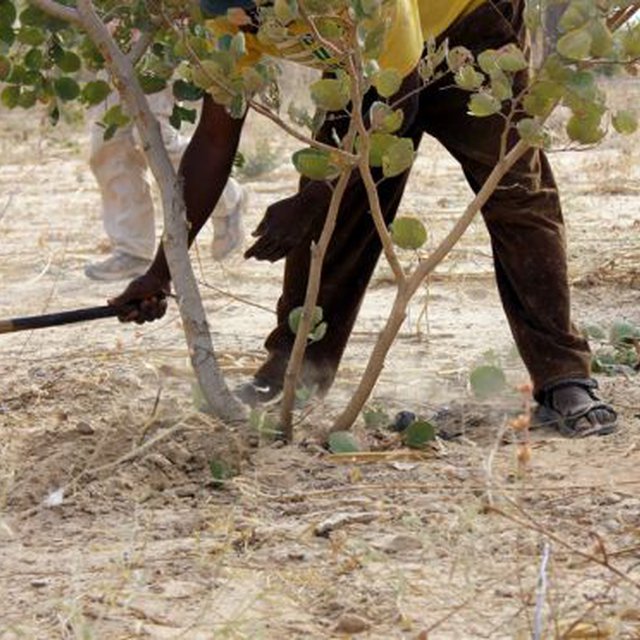

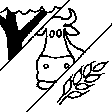




ຂໍກຳນົດທາງເທັກນິກ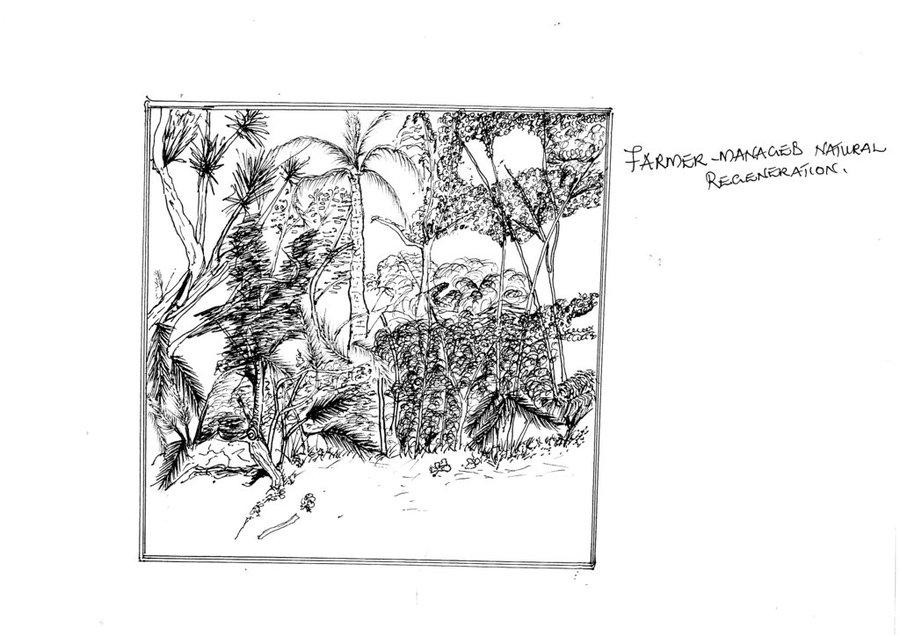
ຜູ້ຂຽນ: Prosy Kaheru
1. Spacing between trees is is 10 to 30 meters
2. Each tree stump should be pruned, leaving 3 - 4 offshots to allow for proper continued growth 3. Other farming activities such as controlled grazing and bee-keeping may be included |
|||||||||||
| ລະບຸ ປັດໃຈ ນໍາເຂົ້າ ໃນການຜະລີດ | ຫົວໜ່ວຍ | ປະລິມານ | ຕົ້ນທຶນ ຕໍ່ຫົວໜ່ວຍ (UGX) | ຕົ້ນທຶນທັງໝົດ ຂອງປັດໃຈຂາເຂົ້າ ໃນການຜະລິດ (UGX) | % ຂອງຕົ້ນທຶນທັງໝົດ ທີ່ຜູ້ນໍາໃຊ້ທີ່ດິນ ໃຊ້ຈ່າຍເອງ |
| ແຮງງານ | |||||
| Pruning of stumps and seedlings | Acres | 1.0 | 150000.0 | 150000.0 | 100.0 |
| Fencing | Acres | 1.0 | 200000.0 | 200000.0 | 100.0 |
| ວັດສະດຸກໍ່ສ້າງ | |||||
| Poles for fencing | Number | 300.0 | 5000.0 | 1500000.0 | 100.0 |
| Barbed wire | kgs | 50.0 | 20000.0 | 1000000.0 | 100.0 |
| ຕົ້ນທຶນທັງໝົດ ໃນການຈັດຕັ້ງປະຕິບັດ ເຕັກໂນໂລຢີ | 2'850'000.0 | ||||
| ລະບຸ ປັດໃຈ ນໍາເຂົ້າ ໃນການຜະລີດ | ຫົວໜ່ວຍ | ປະລິມານ | ຕົ້ນທຶນ ຕໍ່ຫົວໜ່ວຍ (UGX) | ຕົ້ນທຶນທັງໝົດ ຂອງປັດໃຈຂາເຂົ້າ ໃນການຜະລິດ (UGX) | % ຂອງຕົ້ນທຶນທັງໝົດ ທີ່ຜູ້ນໍາໃຊ້ທີ່ດິນ ໃຊ້ຈ່າຍເອງ |
| ແຮງງານ | |||||
| Labour for pruning | acre | 1.0 | 150000.0 | 150000.0 | 100.0 |
| ວັດສະດຸກໍ່ສ້າງ | |||||
| Replacement of poles | Number | 20.0 | 5000.0 | 100000.0 | 100.0 |
| ຕົ້ນທຶນທັງໝົດ ທີ່ໃຊ້ໃນການບໍາລຸງຮັກສາ ເຕັກໂນໂລຢີ | 250'000.0 | ||||
Well fenced, protected and no encroachment
Only paying labour for fencing
From the sale of forest products
From the sale of fruits and tree products like firewood, timber and staking materials
Fencing: no roaming animals
Due to litter